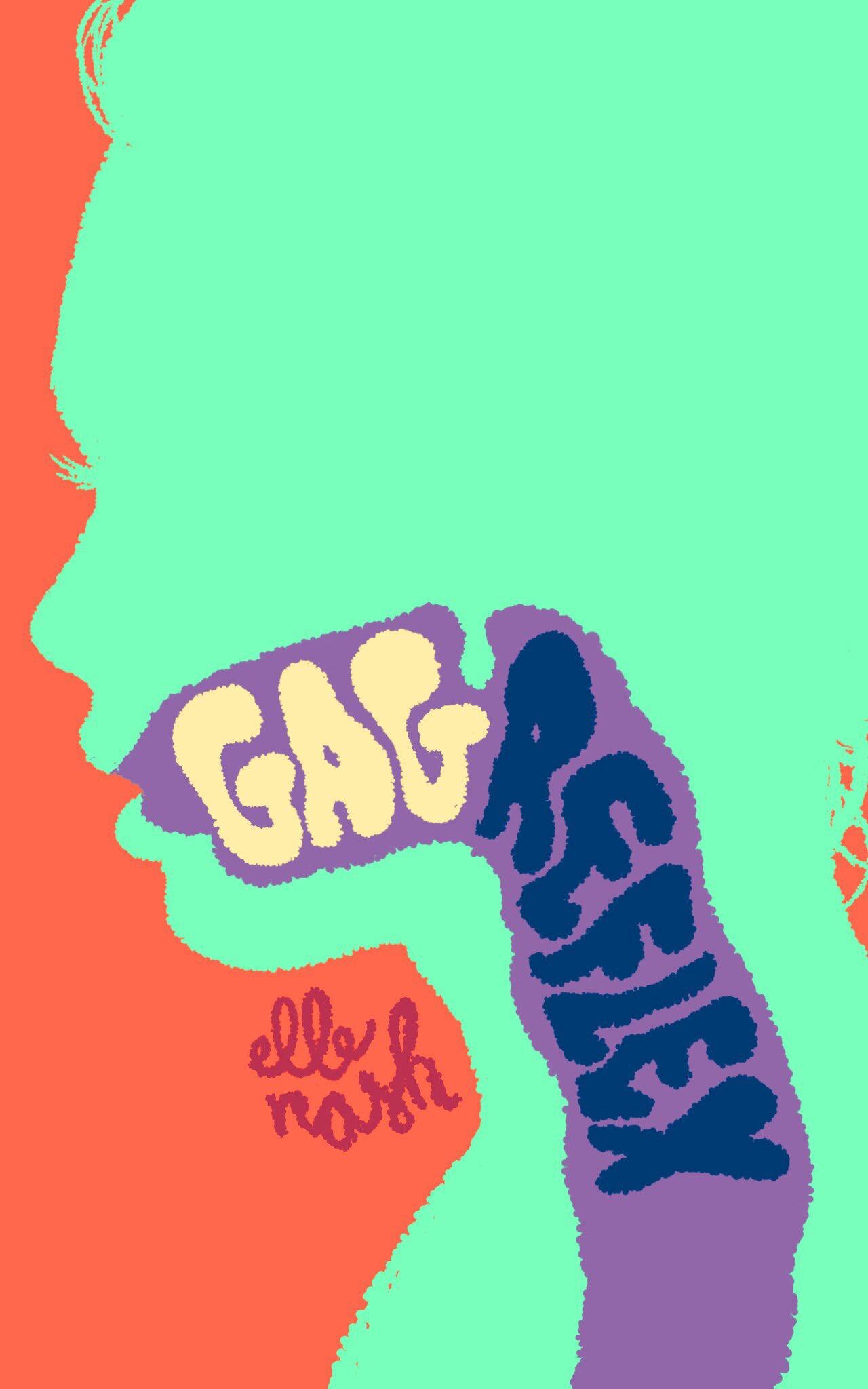An Epistolary Novel for the 21st Century
Reviews
By Conor Hultman
There is an elephant in the room of literature. The Internet, and social media in particular, has come to occupy a titanic proportion of our daily lives. These applications, as innocuous and insipid as they seem, could be the namesake of this era for all the drastic changes they’ve wrought. Despite the fact that we’ve lived with the web for thirty-odd years, I’ve only read one good Internet novel.*
Rejoice! Elle Nash has written the second. Gag Reflex (CLASH Books) is an epistolary novel for the twenty-first century. It takes the form of a LiveJournal, circa 2005. “Form” here means a lot more than it would in another book. Instead of just reprinting the text of each LiveJournal entry, Gag Reflex reproduces the LiveJournal user experience. Every page features usernames with x’s and underscores, brackets and broken HTML code abound, and ASCII mosaics border low-res photos.
This constellation of random info, visually buzzing around the narrative, carries significance. Nash finds avenues in her schema for the most subtle revelations. For example, Lucy, the teenaged author of the LiveJournal, is caught in a love triangle between two guys with girlfriends. Late in the novel, having entered the lowest level of her self-loathing spiral, Lucy makes a public post. The reader can only see the filenames of the uploads:
<thighsnlies.jpg>
<cigarette.jpg>
<nightpark.jpg>
<railme.jpg>
*~*~*~*
<mikeandlucyfuck.mov>
Then, Lucy writes this poem:
pain is there,
but the relationship
you have to it is
what will truly
determine where you stand
and how you fall
A number of comments appear at the end of the post. Eighty-six comments: the most Lucy gets for any entry. This total brutally underscores the unfeeling prurient interest of her anonymous audience. On the very next page, we’re presented with a flashback comment from Lucy’s other crush, Brian, wishing that she “could be happy like when we were together.” Nash suggests the bottomless suffering of real life with the scantest digital scaffolding.
The story is told via three mediums. First are the LiveJournal entries, manic looping confessionals in lowercase. Lucy waxes nihilist about her eating disorders, high school sex drama, self-harm, and agitated mental states. Sometimes the language is blunt: “i hate life and i hate work and i hate me at the moment.” At other times, it’s elevated: “you told me you see metropolitan and suburban decay as wasted potential, depressing, unused, left to rot in its ruins”.
Second are AIM chatlogs with users in Lucy’s (lucifer_dramamine) virtual eating disorder community. They give her advice, commiserate about binge-eating and puking, and abuse emoticons. They function as a chorus, expanding on the story’s actors and propelling the action. This instant messenger chorus also helps to reset the tone, reintroducing levity and raising our spirits so they can sink even lower. They also dispense good humor that should be celebrated for its own sake:
lucifer_dramamine (1:39:18 AM): Tofu?
hungerbound (1:39:26 AM): its spongey
XxXDvSxBaBeXxX (1:39:30 AM): EW.. spongey!?
hungerbound (1:39:37 AM): well its not like . . . chewing on a sponge
XxXDvSxBaBeXxX (1:39:42 AM): 0_0
Last are the periodic calorie charts. One of them looks like this:
thursday- 2430 cals
friday- 1780 cals
saturday- 600 cals
sunday- 3845 cals 🙁
monday- 90 cals
tuesday- 400 cals
wednesday- 200 cals
thursday- 4560 cals 🙁
These notes are eerie little tablatures of isolation. The caloric diary tells much, too; the entries work like a relief sketch of Lucy’s mental state as revealed by her physical condition. But they’re impersonal—so unlike her LiveJournal posts or chats. They leave no room, whether for pleas or explanations or expression. Every time a calorie charts surfaces in the test, it unsettles. It asks for silence.
Nash continues with the style perfected in her previous books, Nudes (Short Flight/Long Drive Books) and Animals Eat Each Other (Dzanc Books). Unrelenting, aggressive, and vulnerable in the sense that an exposed nerve ending is vulnerable. The depressive sexual politics of Animals Eat Each Other has evolved into the manic autoeroticism of Gag Reflex. Or maybe it’s the other way around; Gag Reflex is a prequel.
Speaking of evolution, Gag Reflex sits at the recombinant edge of the epistolary genre. Consider Richardson’s Clarissa: the hidden letters, the plotting coterie of writers, the endless divergences. It’s a beautiful, baroque masterpiece of excess. What Nash does is take that mass of emotional consciousness, strain it through alcohol, then make it fit on the head of a pin. Gag Reflex uses metadata for metanarrative. The dates, the numbers of comments, even the current music tab at the bottom of the posts: they array a darkened hall of mirrors, intimating the depths of Lucy’s trauma that are scarier unsaid. Nevertheless, this book reveals a lot, mostly by talking about how we talk to others about ourselves. In the acknowledgements Nash notes that the social media of today “is not nearly as intimate and is much more highly contrived than our livejournals.” Sometimes it looks like everyone is growing colder and farther apart. In another sense, being a person has never been different and never could be. Gag Reflex lives in this wound even as it hurts it.
*Amygdalatropolis (Schism2 Press) by B. R. Yeager
Conor Hultman lives in Oxford, Mississippi.
More Reviews

